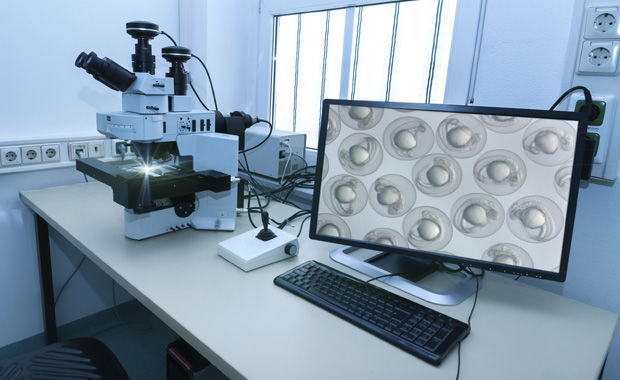If You Suffer From Blurry Or Distorted Vision It's Time To See Your Eye Doctor
Prevention and Treatment Early detection of eye diseases improves recovery and helps identify other cardiovascular issues in the body.

lurriness or distortion in your central vision could be symptoms of eye conditions that can worsen without treatment. These eye disorders should be promptly diagnosed and treated by a vision health professional. Here’s what you need to know about three common eye disorders.
Age-related macular degeneration (AMD)
As we age, abnormal blood vessels may begin to grow in weakened areas of the eye and interfere with our central vision. “Some of the early symptoms may be decreased vision, a blurring or central distortion of vision,” explains Dr. Kylen McReelis, a practising ophthalmologist and President of the Eye Physicians and Surgeons of Ontario (EPSO). “Lines that are supposedly straight may have a blur or warp to them.”
Age-Related Macular Degeneration begins as dry AMD, which may cause no symptoms, and progresses to wet AMD when bleeding or fluid leakage occurs into the retina, causing the aforementioned distortion. Ophthalmologists like Dr. McReelis are able to identify signs of dry age-related macular degeneration as part of a patient’s regular eye exam.
Diabetic macular edema (DME)
Both insulin and non-insulin dependent diabetics are at risk of developing diabetic macular edema. “Blood vessels near the area of central vision can have leakage of fluid,” explains Dr. Jordan Cheskes, President Elect of EPSO and a practising retinal specialist. “Instead of the macula being nice and dry, it gets a little bit waterlogged due to the swelling. As a result, it reduces vision — it’s almost like looking through a glass of water.”
“If we see evidence of diabetes in the back of the eye, we will often see patients multiple times a year.”
Diabetics should be screened yearly by their vision health professional. “If we see evidence of diabetes in the back of the eye, we will often see patients multiple times a year,” Dr. Cheskes says. The length of time that patients have been diagnosed with diabetes and how well they can control their blood sugar influences how likely the patient is to develop DME.
Retinal vein occlusion (RVO)
Dr. McReelis explains retinal vein occlusion as a stroke-type event. “Often it may be a more rapid onset of vision loss,” he says. RVO occurs when a vein blockage impairs the circulation of blood in the back of the eye, which leads to blurring and distortion in central vision. “It causes some bleeding and/or some leakage of fluid into the central part of the eye,” explains Dr. McReelis.
Risk factors and treatment
AMD, DME, and RVO share similar risk factors which include smoking, high blood pressure, and high cholesterol levels. “We want to make sure that those risk factors are well taken care of before instituting any treatment,” Dr. Cheskes says. Then the eye diseases are treated with an injectable medication called an anti-vascular endothelial growth factor or anti-VEGF, which reduces the bleeding, swelling, and leakage of fluid into the retina. “It’s proven to be quite beneficial in improving vision,” explains Dr. Cheskes. Some patients may also receive laser therapies, while certain vitamins help prevent dry AMD from progressing to the more severe wet AMD.
The importance of early detection
Early detection and administration of anti-VEGF treatments help to prevent further distortion and deterioration of vision. “Once the bleeding or leakage occurs, it damages the cells responsible for central vision,” says Dr. Cheskes. “The quicker the treatment is instituted, the fewer cells are impacted and the better visual restoration and prognosis patients will have.”
“The retina is a tissue that’s affected by diabetes, high blood pressure, and smoking.”
When ophthalmologists examine a patient, they’re not only looking for signs of AMD, DME, and RVO. “The retina is a tissue that’s affected by diabetes, high blood pressure, and smoking,” says Dr. Cheskes, who can identify serious cardiovascular conditions in his patients. “The eye is a window to how certain diseases are occurring. We have the ability through a very simple screening exam to take a look at the back of the eye, prevent these larger issues, and reduce the burden on the health care system.”











.jpg)











.jpg)



















.jpg)






















.jpg)

.png)











